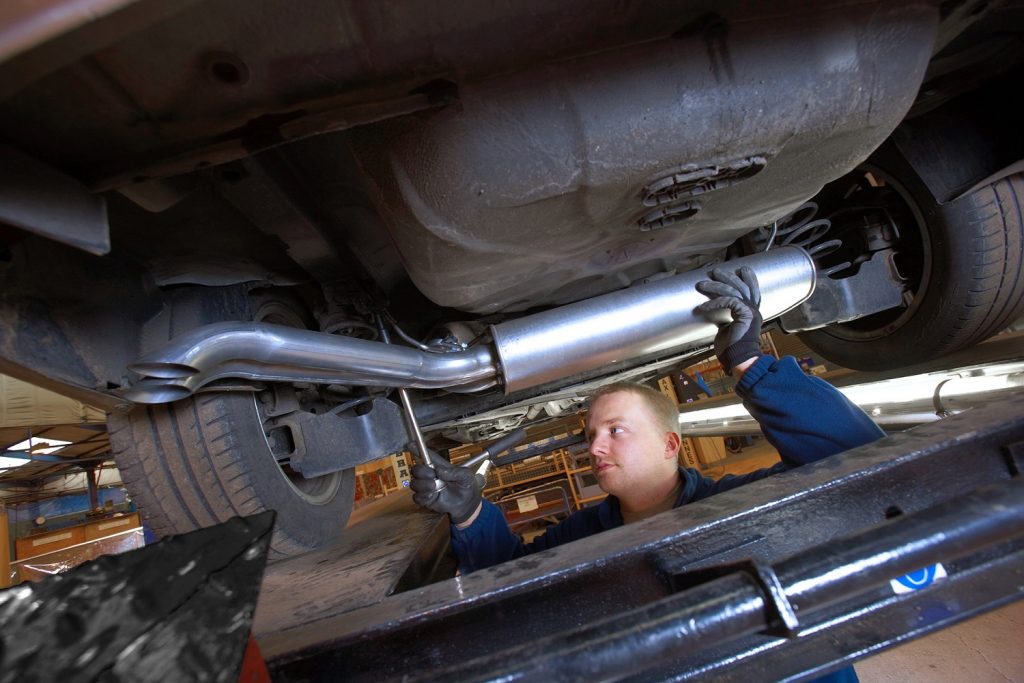Size matters…the size of cars on British roads is growing. This not only has implications for motorists, pedestrians and the road network, but the aftermarket too. In future, existing infrastructure at service garages and parts suppliers may prove inadequate to properly maintain this supersized generation of vehicles, and in response, many will have to invest in new facilities. So what do larger cars mean for the aftermarket?

A growing trend
“Simplify, then add lightness” was the maxim of Lotus legend Colin Chapman and is still one of the commandments of good car design. However, the automotive industry, with a few exceptions, is taking an opposite approach: complicate, then add largeness. Consequently, cars on UK roads have never been bigger.
A recent study found that 161 cars currently on sale do not fit inside a standard UK parking space, while 27 were so wide that occupants would struggle to open the doors when parked. (1) Research conducted in 2022 showed that cars in the UK and EU were on average 15% heavier compared to 2001. (2) Another report discovered that new cars in Europe are growing 1cm wider every two years on average. (3) GMC’s Hummer EV is currently the widest on UK roads, measuring an incredible 2.2 m across.
Motorists go large
What are the drivers behind this growth spurt? It’s a common refrain in the 21st century car market, but SUVs must take a fair portion of the blame. Since 2010, the global popularity of SUVs has increased nearly tenfold, with an estimated 330 million on the road today. (4) The commanding driving positions, perceived safety benefits, spacious interiors and imposing aesthetic of big SUVs have proved incredibly popular with motorists.
Consequently, automotive original equipment manufacturers (OEMs) have positioned SUVs as flagship models, with fierce competition between brands to gain market share and reach ever higher sales figures. The fact that OEMs achieve better profit margins on SUVs compared to other vehicles has provided further incentive.
The trend has even seen compact cars fatten up, with consumers increasingly opting for the quasi-off-road charms of crossovers instead of traditional hatchbacks. Illustrating this, citing falling sales Ford recently retired the legendary Fiesta in favour of the larger Puma crossover.

Supersizing across the sector
SUVs and crossovers don’t tell the whole story though. New legislation to protect pedestrians and vehicle occupants has mandated manufacturers to incorporate more impact protection and safety-oriented systems compared to a decade ago. Electrification has increased the size and weight of powertrains with additional batteries and motors. Packaging all these systems often requires an expanded vehicle footprint.
Consumer preference is another factor. Each model iteration must supersede the previous offering in terms of features and visual impact to guarantee sales. Increasingly, especially in the luxury sector, this means building a larger vehicle. BMW’s 2023 7 series is 131 mm longer than its 2019 predecessor. Nobody wants to purchase a new car that is perceived as step backwards, and size matters to motorists.
Bigger might not be better
When it comes to vehicle maintenance, bigger isn’t always better. In three years or less, the latest generation of large cars will undergo their first MOT. If a vehicle can’t fit in a standard UK parking space, there is a good chance that it won’t fit on a ramp either. Without investing in new equipment, many garages may find it difficult to effectively service newer models.
Aftermarket parts suppliers have a similar problem. Reputable companies develop their components using real world vehicles of correct make, model and production year – a critical approach to deliver a product that matches the OEM design and achieves type-approval. However, if a model is too large for the testing facilities, product development is difficult.

New cars, new equipment
Manufacturers like Klarius Products, the UK’s largest provider of aftermarket exhausts, are responding, as Doug Bentley, Head of Research and Development explains: “To support our customers, we must always produce quality exhausts to fit the most popular models, and nowadays, these are often larger cars. Developing and validating our type-approved products invariably involves getting a test car up in the air, so we have installed a wider ramp at our facility so we can work with larger models.”
The success of the automotive aftermarket depends on meeting the future maintenance needs of vehicle owners. Companies must quickly develop new products to provide parts coverage for the most popular models. With motorists opting for larger cars, investing in new heavy duty equipment to support them will be essential for future profitability. Like heavy cars that require beefier engines, brakes, suspension and other assemblies to function properly, the aftermarket finds itself in a similar infrastructural predicament regarding these vehicles.



